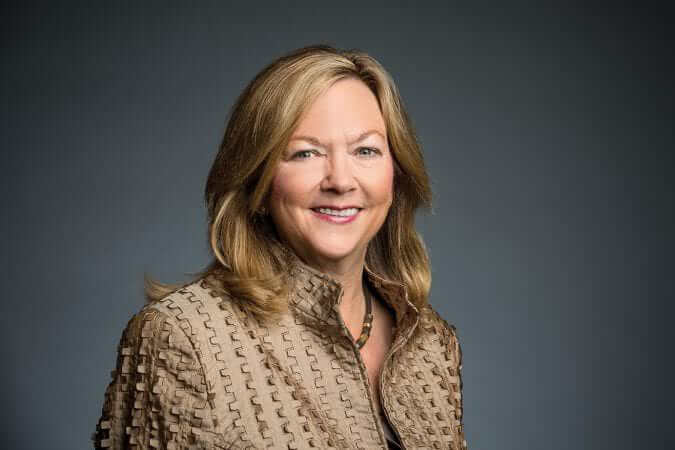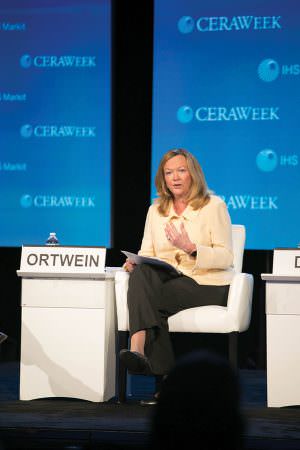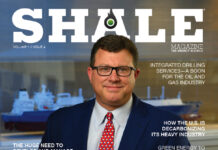
“We Believe in Long-Term Careers.”
It is an increasingly rare thing indeed to come across anyone in America today who has spent an entire career working for a single corporate entity. The advent of constantly-advancing technologies and our increasingly mobile and restless society has by and large ended the American dream of working for one company for 40 years and retiring on a comfortable pension.
That’s just not how things work in America anymore. The U.S. Bureau of Labor Statistics estimates that the typical American can expect to change jobs 10 to 15 times during his or her career, with around half of those changes involving a change in employer.
In the past, remaining with the same company throughout a full career typically meant becoming very good at a single job and eventually developing some leadership and supervisory skills if one wanted to advance up the chain. Today, especially in a constantly evolving business like the oil and gas industry, the ability to do so requires high degrees of adaptability, equanimity, innovation, constant improvement, leadership and the ability to consistently add value to advancing the company’s goals.
 Sara Ortwein, the President of ExxonMobil subsidiary XTO Energy, is that kind of person — the kind of person with the set of skills necessary to not just spend an entire career within the ExxonMobil corporate umbrella, but to deploy those skills so ably that she has advanced to one of the organization’s most senior leadership positions. As she noted when we caught up to her in September, that career has now endured for 38 years, and she feels fortunate things have worked out this way. She also points out that her longevity with the company is actually in keeping with the long-term view ExxonMobil takes with its employees.
Sara Ortwein, the President of ExxonMobil subsidiary XTO Energy, is that kind of person — the kind of person with the set of skills necessary to not just spend an entire career within the ExxonMobil corporate umbrella, but to deploy those skills so ably that she has advanced to one of the organization’s most senior leadership positions. As she noted when we caught up to her in September, that career has now endured for 38 years, and she feels fortunate things have worked out this way. She also points out that her longevity with the company is actually in keeping with the long-term view ExxonMobil takes with its employees.
“I have had the pleasure, as you say, of spending my entire career with one company,” she says. “We recruit, train and develop employees with a long-term view. The company invests heavily in its employees, and that’s what has been done with me and those who work around me.”
That career investment by a global company like ExxonMobil most often involves a willingness to relocate frequently and adapt to new cultural situations. “I’ve been exposed to a variety of cultures. I’ve had the opportunity to work on a lot of exciting and challenging projects all over the world, things that I never would have envisioned when I first came to work,” Ortwein notes. “Most importantly, I’ve had the opportunity to work with outstanding people at ExxonMobil and across the industry.”
But it isn’t all exotic new places and international travel. When Ortwein graduated from the University of Texas with a Bachelor of Science degree in civil engineering in 1980, she went to work as a drilling engineer for the Texas operations of Exxon Company, U.S.A. To illustrate how much has changed in the industry in the intervening 38 years, she recalled an example of one of the company’s early efforts at drilling a horizontal well in the prolific Austin Chalk formation, which was in the midst of its first of several boom times.
“Shortly after I had left the drilling group, one of my colleagues designed and drilled a horizontal well in the Austin chalk. That well was 500 feet in the horizontal section,” she begins, “and I remember it was a dry hole, but it was a technical success that we were all excited about at the time. Today, we’re drilling horizontals up to 3 miles in shale and tight formations. And in some places offshore, we’re drilling up to 8 miles in the horizontal.”
Another part of Texas she points to as having evolved radically during the course of her career is the Permian Basin, where XTO Energy has a very large and active position. “The other interesting piece that has changed is the Permian,” she says, “I have had the opportunity to work the Permian three different times in my career. And it keeps evolving and changing, and we keep finding new and different ways to get the resource out of the ground, this time with horizontal drilling and fracturing.
“So, a lot has evolved and changed.”
Indeed, it has.
As the company continued to invest in Ortwein, she continued to produce value-adding results, as the chart of her rapid career progression over the last 21 years clearly demonstrates:
- 1997 – she was named reservoir evaluation and planning manager for Exxon Ventures, CIS (Commonwealth of Independent States), focusing on new venture pursuit and capture in Russia, Azerbaijan and Kazakhstan.
- 2001 – Became corporate upstream advisor to senior management at ExxonMobil headquarters in Irving, Texas.
- 2004 – Named production manager for ExxonMobil’s operated U.S. production operations.
- 2006 – Became vice president of engineering for ExxonMobil Development Company.
- 2010 – Named president of ExxonMobil Upstream Research Company.
- 2016 – In November Ortwein was named President of XTO Energy.
Ortwein’s career achievements have not gone unnoticed outside of the ExxonMobil corporate umbrella. Far from it. This paragraph from her profile on the XTO website tells part of that story:
Sara has been a champion for math, science and engineering, with a particular focus on mentoring future leaders in these fields. In 2009, she was honored by The University of Texas as a Distinguished Engineering Graduate from the Cockrell School of Engineering. Sara has been recognized by the Women’s Energy Network of Houston as an individual who exemplifies commitment to excellence and a role model for women engineers. In 2012, she was honored by Bio Houston with the Women in Science Excellence award. In 2013, she was recognized by the Greater Houston Women’s Chamber of Commerce as a breakthrough leader in the field of energy. In 2014, she was recognized as one of Houston’s Top Ten Women in Energy by the Houston Business Journal. In 2017, she was recognized by the Society of Petroleum Engineers with the Distinguished Membership award. And, in 2018, she was recognized with the Women who Mean Business award by the Houston Business Journal.
Recognitions such as those listed above do not materialize out of nowhere. They are in fact the kinds of awards designed to recognize extraordinary achievements in a person’s field of expertise. The kinds of achievements that made Ortwein the obvious choice for leadership at XTO Energy.
Ortwein and the increasing number of other women in positions of senior leadership in the oil and gas industry probably grow weary of being asked about it, but their status remains an all-too-rare feature of the industry today. For many decades, a female presence in the industry’s board rooms was almost unheard-of, and it has only been during Ortwein’s own time in the business that things have begun to really change.
When asked to discuss the reason why she has been able to become one of the pioneers in this time of change, she didn’t hesitate about where to begin. “It started with my parents. I was fortunate in that I had parents who taught me a strong work ethic, and to treat everyone with dignity, respect, while at the same time not be intimidated by others.”
The company where she has spent her entire career and the people in it also played a major role. “I was very fortunate to come into an organization like ExxonMobil that has this focus on a long-term career, on allowing every employee to progress to their own potential and providing opportunities for employees to do that. There’s a structured approach to people development that is a key part of what our organizational leaders spend their time on. It’s making sure that we’re providing opportunities for our employees to develop, including training, experiential learning and job opportunities that match the business needs.
“Throughout my career I’ve had some outstanding supervisors and personal mentors, and those mentors weren’t people assigned to me. They were people who took an interest in me in various phases of my career and helped me along the way. They helped me see the potential that was there and helped me understand what I needed to accomplish to achieve that potential.”
Not Your Ordinary Corporate Subsidiary
XTO Energy began its life in 1986 as a company named Cross Timbers Oil Company. Cross Timbers was founded by three former executives of the Southland Royalty Company, helped by $35 million in seed money raised by former Goldman Sachs Chairman Robert Rubin, who later became Secretary of the Treasury under President Bill Clinton.
 Cross Timbers began life as an acquirer and operator of long-lived oil and gas properties in several states, the largest part of which in the beginning were in the San Juan Basin region of Northwest New Mexico. As the company grew, its financing needs grew along with it, and in 1993 the decision was made to take the company public. Traded on the NASDAQ, where its stock symbol happened to be “XTO,” the company continued its rapid growth trajectory, becoming one of the early large operators in the Barnett Shale play. In 2001 the decision was made to change its name to the current XTO Energy.
Cross Timbers began life as an acquirer and operator of long-lived oil and gas properties in several states, the largest part of which in the beginning were in the San Juan Basin region of Northwest New Mexico. As the company grew, its financing needs grew along with it, and in 1993 the decision was made to take the company public. Traded on the NASDAQ, where its stock symbol happened to be “XTO,” the company continued its rapid growth trajectory, becoming one of the early large operators in the Barnett Shale play. In 2001 the decision was made to change its name to the current XTO Energy.
When ExxonMobil’s management was looking for the best way to get into the U.S. shale business in 2009, it ultimately decided the best way to do that was to acquire what had become a very large, Fort Worth-based independent producer. The company’s leaders made a special commitment as part of the $36 billion deal to preserve the spirit of an “independent” producer within XTO while leveraging from the broader corporate organization. To ExxonMobil’s credit, it has held to that commitment, and the results have been rewarding.
Today, XTO owns interests in more than 50,000 wells across the United States, Western Canada and Argentina. It is a major player in multiple shale basins, including the Permian Basin, the Marcellus and Utica Shales, the Bakken Shale, the Haynesville Shale, the Barnett/Woodford Shales, the Eagle Ford Shale and the Fayetteville Shale. Taken with its operations in other play areas, it constitutes one of the largest independent producer portfolios in the industry.
But there’s more to the ongoing success of the merger than preserving XTO’s independent company culture: the ability to leverage ExxonMobil’s integrated business model and expertise in managing large projects has helped make XTO even more competitive than it already had been.
Here’s how Ortwein describes the plan. “We invested heavily in unconventional resources through our merger with XTO in 2010. One of the clear intents was to make sure that we gained access to a wealth of shale development experience as well as the shale and tight assets of XTO,” she says. “We recognized that there are differences in how you progress the development of shale and tight resources. So, we have maintained XTO as a separate entity.
“That said, we’ve got a unique competitive advantage having a strong corporation with significant project and technology development capability,” she continues. “We have the ability to take the unconventional experience and XTO’s expertise and manage that business as appropriate, but also bring to bear the research and project know-how, and significant capabilities from the rest of the corporation.
“For instance, the downstream, chemical and midstream capability that we have in ExxonMobil is very relevant in the Permian — being able to connect the dots to maximize the value to our shareholders.”
As the company’s asset base and operational results clearly indicate, it’s a plan that is working extremely well.
Managing the Elephant in the Permian’s Living Room
The growing issue with a lack of pipeline capacity for both oil and natural gas coming out of the Permian Basin has been extensively reported by the energy media in recent months. There is no question that it is a real problem, and most expect the issue to linger for the next year before a raft of pipelines currently under construction begin to come online and provide relief. Until that time, operators in the hottest play area in North America must find ways to get their product to market and deal with a growing price differential for their production.
Simply put, it has become the Permian’s own “elephant in the living room.” And it is obviously a subject that has been high on Ortwein’s radar for some time.
“We are tremendously excited about the potential in the Permian. That includes the potential for XTO, for ExxonMobil and for the entire industry,” she begins. “And with that potential we can move drilling rigs in and out very quickly — it’s one of the advantages of the unconventional — but it takes time for the midstream infrastructure to catch up with the drilling.
“With any new development, the key is to get the right infrastructure in place both in the basin and then to the markets. And that is especially the case in unconventional basins, where the production growth is tremendously rapid, and then it takes the industry a bit longer to get the midstream and the downstream logistics and markets all connected.”
It is that lag time between upstream results and midstream build-out that is at the top of Ortwein’s mind. She continues: “You may be aware that earlier this year, with the potential we’re seeing on our acreage, we committed to triple our daily production in the Permian to 600,000 barrels by 2025. That’s a tripling of our overall production and a fivefold increase in our unconventional production. So, with that commitment, we recognize the need for infrastructure to be able to transport our production out of the Permian Basin.”
 Not surprisingly, Ortwein and her management team have a detailed plan to address the issue. “One of the things we’re doing is to make sure we can control our own destiny and move our products. We’ve announced a joint venture with Plains All American to construct a long oil pipeline and that’s going to transport crude and condensate from our Wink oil terminal (near Wink, Texas) to various delivery points along the U.S. Gulf Coast. We also have plans to ship up to 500,000 dekatherms of natural gas per day on Summit Midstream Partners’ Double E pipeline in the Permian Basin, which will go to the Waha Hub in West Texas. From there, our plans are to ship up to 450,000 dekatherms per day on the Permian Highway Pipeline project, which is a joint venture between Kinder Morgan, Eagle Claw Midstream and Apache. That long-haul pipeline will transport natural gas from Waha to the Gulf Coast.”
Not surprisingly, Ortwein and her management team have a detailed plan to address the issue. “One of the things we’re doing is to make sure we can control our own destiny and move our products. We’ve announced a joint venture with Plains All American to construct a long oil pipeline and that’s going to transport crude and condensate from our Wink oil terminal (near Wink, Texas) to various delivery points along the U.S. Gulf Coast. We also have plans to ship up to 500,000 dekatherms of natural gas per day on Summit Midstream Partners’ Double E pipeline in the Permian Basin, which will go to the Waha Hub in West Texas. From there, our plans are to ship up to 450,000 dekatherms per day on the Permian Highway Pipeline project, which is a joint venture between Kinder Morgan, Eagle Claw Midstream and Apache. That long-haul pipeline will transport natural gas from Waha to the Gulf Coast.”
Here, the plan illustrates some of the advantages of XTO’s affiliation with ExxonMobil. “You may recall that I mentioned the Wink terminal. ExxonMobil purchased the Wink terminal last year to enhance our ability to move our production. It’s strategically positioned to handle Permian crude and condensate from the Delaware Basin, very near the Texas-New Mexico border, and to be a hub from which we can transport to Gulf Coast refineries and marine export terminals. We’re making plans to expand that terminal and add key infrastructure upgrades that will allow us to efficiently move ExxonMobil production and also third-party production from the Delaware and Midland basins down to the Gulf Coast.
“So, we have a lot of work underway to ensure that we have the right infrastructure in place to support our production growth. The investments that we’re contemplating today are expected to exceed $2 billion. To me, one of the exciting things about it is that it will support short term construction jobs, but also longer-term positions associated with the infrastructure as we progress.
“Through these kinds of investments, we’re making sure that we are able to move our product out of the basin and able to connect our production in the Permian to our refining and chemicals infrastructure on the Gulf Coast.”
That full value chain proposition is an advantage pure independent producers cannot replicate.
“Technology has Made an Enormous Impact in our Business.”
Ortwein’s reference to the jobs being created in all the midstream infrastructure buildout led to another jobs-related question: How will the rapid adoption of increasingly-advanced technologies in oil and gas operations change the job market in the industry? Given her background, it’s a question Ortwein is well-positioned to address.
“This is an area of the business that’s really exciting to me,” she says. “Before becoming President of XTO, I was the President of our upstream research company. I came into that position out of a production operations background predominantly, and I’ve had some experience in working our major projects around the world in our development company. But I had never actually been in a research role. I spent six years in our research company, supporting the teams in making a connection with the business on where technology was needed, where it was applicable and what the possibilities were.
“I talked earlier about the examples of the long laterals and the horizontal wells, and hydraulic fracturing, and if you go back in history, there are lots of different examples of how technology has made an enormous difference in our business.
“Think about when I started in 1980 as a drilling engineer and the jobs on drilling rigs were fundamentally manual functions. Now, look at how much of that work has been automated today. We have fewer people on the rig floor today, for example, which makes it much safer.
“At ExxonMobil and XTO we believe in the promise of technology to help us develop energy in the safest, most environmentally responsible, efficient and effective manner. We have seen lots of different examples for how technology has enabled that for us. We’re different from most of the independents and also the integrated majors in that we have large in-house research capabilities both upstream and downstream. Additionally, our corporate strategic research organization conducts research in fundamental science.
“We also partner with many universities and other interests,” she continues. “Technology is key to our business and you can see it in the changes that have occurred over time in industry. One of the key areas is automation. It’s important now, but we’re really just getting started in what it can do for us in changing the way we go about our business. It can make us more efficient, allowing us to have access to a wealth of data, enabling data analytics and machine learning.
“Ultimately, it is going to change the way we run our business, and that is going to require that we have skilled employees to make sure that we understand the data we have access to and the capabilities that are out there. And with our growing production and our increased drilling operations in the Permian, it’s going to be all that much more important to enhance efficiency.”
One aspect of advancing technology is the ongoing refinement in the areas of horizontal drilling and hydraulic fracturing. “One of the key areas that we’re really excited about is our ability to drill longer lateral wells. And we’re excited about that because it means greater efficiency from a capital expenditure standpoint,” she says.
“We can drill fewer wells to gain access to the oil and gas reserves. But it will also mean that we have a smaller surface footprint and that’s very important to us as well. So, both from a commercial standpoint and an environmental standpoint, we’re focusing on what is the optimum length lateral well for cost as well as access to the resource.”
ExxonMobil’s January 2017 acquisition of the Fort Worth-based Bass Companies’ West Texas assets has also enhanced the company’s ability to optimize its horizontal drilling operations. “We’re very fortunate in that, with the acquisition of the Bass companies and that large, contiguous acreage position of 250,000 acres in the Delaware Basin — it allows us to really lay out and optimize an efficient development.
“We drilled our first 12,500 foot horizontal well in the Delaware earlier this year, and we recently drilled our first 16,000 foot horizontal well in the basin. We’re also in excess of 15,000 feet in the Midland Basin in West Texas. And so, we’re going to continue to work on optimizing the lateral lengths, and the completions that go with those wells.”
The fact XTO produces in every major shale and unconventional basin in the U.S. also allows the company to transfer learnings not only between operational areas within each basin, but also from one basin to another. This kind of sharing of information is a key part of optimizing the company’s operations across its entire asset base.
Having all that contiguous acreage in its portfolio also enables XTO to be a lot more efficient in terms of water usage, water transportation and movement of water between leases. “This is a focus area for us. Water usage and water conservation is a key issue both from an efficiency standpoint and also environmentally. In both the Delaware Basin and in the Midland Basin we’re continuously looking at how we access water, produce water and move it through our operations. As a result, we are growing our recycled and reused volumes and will continue to do so. Having the contiguous acreage in the Delaware gives us an opportunity to lay out a system that enables us to optimize the use of recycled water within our operations. It’s something we’re very excited about.”
“Safety is About People.”
I mentioned to Ortwein that, during the course of my own career in the oil and gas industry, I’d had the opportunity to visit several ExxonMobil/XTO operations sites and was always highly impressed by the constant emphasis the company places on safety in the workplace. I asked her to talk about some of the innovations and advancements in safety related processes and technologies her team has implemented since she became the company’s president.
She was happy to oblige. “Maybe it’s in my blood because of my 38 years of ExxonMobil training,” she says, “but at the end of the day safety is about people. It is a fundamental part of our identity as a company and ultimately our goal is that nobody gets hurt. That’s something that I take incredibly seriously as do all of us in ExxonMobil and XTO, and it’s something that is an important aspect of my role as the leader of this organization.
 But the unfortunate thing is that despite that continuous focus on safety, the company still does have incidents, she admits. “We look at each and every incident. We identify ways to prevent similar events from happening in the future, we make changes as appropriate, learning from the events we have. Automation is allowing us to gather and analyze data from well sites and other facilities, reducing hours spent driving to sites. So, we can actually improve safety of individuals just by how much data they can collect in an automated fashion.
But the unfortunate thing is that despite that continuous focus on safety, the company still does have incidents, she admits. “We look at each and every incident. We identify ways to prevent similar events from happening in the future, we make changes as appropriate, learning from the events we have. Automation is allowing us to gather and analyze data from well sites and other facilities, reducing hours spent driving to sites. So, we can actually improve safety of individuals just by how much data they can collect in an automated fashion.
“We’ve recently implemented a program at XTO called “Safe Choice.” You might think, ‘well, what does a program called Safe Choice have to do with technology?’ But the defining aspect of Safe Choice is that it examines the science behind how all of us make decisions. It uses scenario-based learning to illustrate how our individual decision-making processes impact the potential for an incident to occur.
“So, this is another example of where we’re investing in our workforce. We’re getting a better understanding about how we make decisions and how it could potentially impact our safety and the safety of individuals around us. We piloted the program in our Delaware Basin operations last year and we are migrating the program through all of our operations in XTO. We’ve received very positive feedback from our leaders, our managers and our employees. I’m very excited about the potential for that program to make a significant impact on safety in the future.”
“Everyone’s Balance is Different.”
International assignments. Overnight business travel. Late nights at the office. The stress of managing large organizations. All of these factors and many more present challenges for any parent who rises to a senior leadership position within a company, and Ortwein is no exception.
“Through a career like mine, where I’ve had the opportunity to travel to many locations all around the world and have not been home all the time as a result, there have been events that I’ve missed over the years,” she says. “But I think you learn over time that if you’re going to drop a ball make sure you don’t drop the one that’s going to break.”
But then she focuses on a point that so many tend to forget: The resilience of a strong family unit. “Something that you learn with family and children is that if you spend the quality time with them, as a family unit, you’re pretty resilient,” she notes. “As we’ve moved as a family multiple times, we’ve always looked at it as an adventure. A family unit moving to a new place and seeking out things about that place that were different and unique, things we could learn and do together.
“And it was interesting because every time we moved, the family was not excited to leave when we left,” she says with a chuckle. “You know, there was a lot of ‘Why do we have to leave?’, but that happened again the next time we moved as well. And each one of the places where we had the opportunity to live, we’ve considered home and have great memories.”
The topic of “work/life balance” became a corporate buzzword in the United States back in the 1990s, and it ended up being something that some companies spent a lot of time and thought in trying to address, while others gave it mainly lip service. Ortwein points out that it can be a very hard thing to get right since all people are unique individuals, and what works as a “balance” for one person may not work for another.
“I am very fortunate in that I have a spouse, two children, and extended family that are quite supportive, and that’s really been helpful over my career,” she says. “And it’s really been ‘our’ career as a result. One of the things I’ve learned through time, though, is that people ask me about work/life balance and I think everyone’s balance is different. It’s a very hard thing to describe because what’s one person’s balance doesn’t work for another. And it’s different for each person at different points in time, different points in life, different points in a career.”
Here, Ortwein also notes how the rapid advancement of technology can play a positive role in people’s lives.
“With cell phones and laptops and Skype and all the different technologies we have for communicating, you don’t have to always be in the office. You can do what we’re doing today quite easily from anywhere. And it’s a global business. That combination of 24/7 operations with the ability to work from anywhere has really changed the complexion of how one manages time and given us a lot more flexibility than we had in the past.”
At the end of the day, with all the travel and relocations and late meetings and managing organizations consisting of thousands of people, Ortwein jumps at the chance to brag just a bit about the children that her resilient family unit has turned out.
“Absolutely I’d love to brag about my kids, because along the way it has to go down as my greatest accomplishment,” she gleams. “I have two children — a son, Adam, and a daughter, Megan. They both graduated from my alma mater, the University of Texas, although neither of them is an engineer. They both got not only their mom’s analytical engineering side, but they got their dad’s creativity.
“My son is an architect and my daughter is in Public Relations. I’m very proud of them because both are their own people and they have followed their own paths, and now are out making their own way in the world. They have also done quite well at picking life partners who support them in their endeavors. So, I’m very proud of their accomplishments and look forward to seeing what else they’re going to do with their lives.”
Between traveling all over the world, raising a family and managing huge organizations, you might be thinking that Sara Ortwein probably was never able to find time to have any interests outside work and family. But if you were thinking that, you’d be wrong.
“I actually have a pretty wide variety of interests,” she says. “One, I love to travel. Obviously, I’ve had the opportunity to travel for business for many years, but some of my recreation is to travel for fun and for learning.
“I also like the outdoors. I love hiking and sports, both to watch and to play. I met my husband playing tennis and we both still play that as well as golf. Those are two things that I find very relaxing and enjoyable. We also love music as a family. My father-in-law was a musician, so my husband was born with a love of music that he has shared with me and our kids. So, there’s nothing to me more enjoyable than to go to a concert and enjoy live music.
“I also enjoy volunteering in the communities we live in and operate in so that has been a passion throughout my career. So, I have a pretty diverse, broad set of interests, and just try to spend a little bit of time doing a lot of different things.”
There are only 24 hours in every day, and Sara Ortwein seems to wring the most out of every one of them. It’s a work/life balance that wouldn’t work for everyone, but it obviously works for her, her family and for the employees, contractors and customers of XTO Energy.
About the author: David Blackmon is the Editor of SHALE Oil & Gas Business Magazine. He previously spent 37 years in the oil and natural gas industry in a variety of roles — the last 22 years engaging in public policy issues at the state and national levels. Contact David Blackmon at [email protected].
Photography: robert seale















